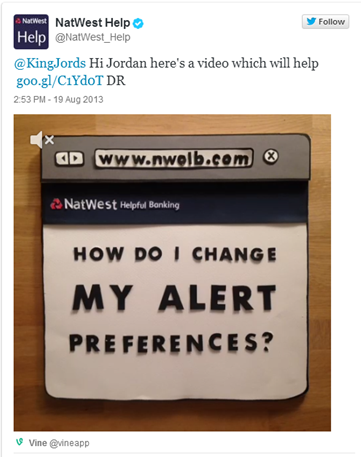Will 2014 be the year for financial social media?
20 November 2013
It’s that time of year where the internet becomes inundated with articles summarising the year past, and gazing into the crystal ball to predict the year ahead. Sorry, this is one of those posts.
In the world of social media, 2013 has been quite a pivotal year. Twitter floated on the stock market, Vine and Snapchat came onto the scene, and Instagramlaunched videos and started testing ads. Facebook introduced clickable hashtags, launched Facebook Home for mobile, and was amid strong rumours of launchingvideo ads, before deciding to postpone.
But for me, one of the real turning points has been in how financial services are using social media.
While financial institutions still lag behind other industries such as tech and retail when it comes to social media, they have made excellent headway, and are finally starting to receive the support required from regulators which will hopefully push them even further. The FCA has started monitoring social networks as part of its regulatory practices, and in the US the FFIEC issued guidelines for the use of social media by financial institutions. With the support of regulators behind them, financial institutions can no longer claim compliance restrictions are holding them back from true social media adoption.
With so much progress made in 2013, where will financial services go with social media in 2014? Gazing into my own crystal ball reveals three predictions.
More innovative use of social media.
As we slowly emerge from the financial crisis, financial services institutions will start to take more risks with their marketing strategies. One of the ways they may start to do this is by adopting social media as a key marketing and communications channel. With customer trust of financial institutions at an all-time low as a result of the financial crisis, such institutions must look for ways to rebuild trust. Social media is a great channel for this, as it can be very public, and conversations can take place on a more personal level.
Some financial institutions are already starting to use social media; for instance, Twitter is often used for customer service. But the real value comes in using social media channels in more innovative ways. NatWest, for example, recently released a series of Vine videos to offer customer service advice and money-saving tips to students. The videos are quick, engaging, and can easily be re-used.

Financial institutions will deliver more personalised products and services.
Social media users share a lot of personal information on social networks, which opens up an entire world of data for any brand. Use of this data is instrumental for delivering truly personalised products and services, building lasting relationships, and winning and retaining customers. Financial institutions already have access to high amounts of customer data, such as purchase history. Marrying this with new social media data can really give the most innovative institutions a real competitive edge.
Social media payments will become more mainstream.
As social media platforms become more integrated into our day to day lives, I can see more being done by financial institutions to make social media payments become more mainstream. Platforms such as Facebook and Twitter are already trying to maximise the amount of time users spend on their networks by improvimg their search functionalities and integrating more with TV, so it’s only a matter of time before we can make payments through social media.
In 2013 a number of innovations were launched in the social media payments space. American Express launched a pay-by-tweet service, allowing cardmembers to make payments using predefined hashtags. ICICI Bank launched an app for customers to pay friends and share expenses between groups of people on Facebook.
That said, making social media payments more mainstream requires collaboration between financial institutions and social media networks. During 2013, social media networks were centre of a number of hacking scandals. Until this risk can be reduced, customer won’t want to link their financial information to their social media profile.
For years social and digital media has been growing and evolving at a rate faster than you or I could ever have imagined. Across all industries people will be watching how the latest developments can be used in business to improve the products and services offered to customers.

